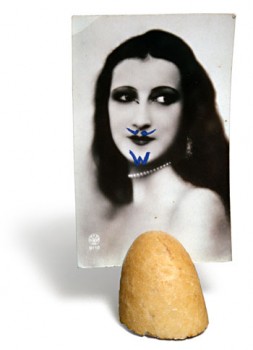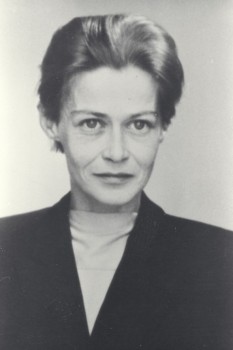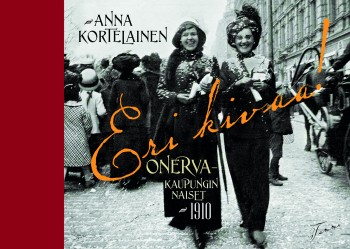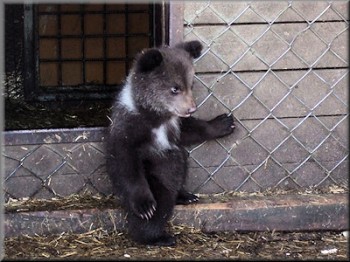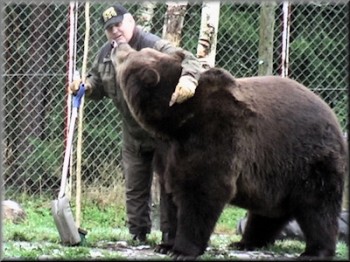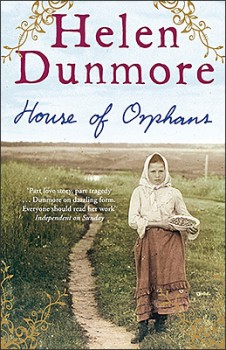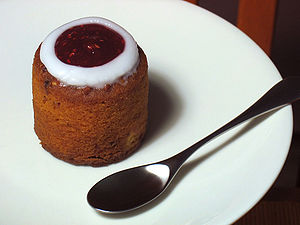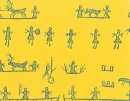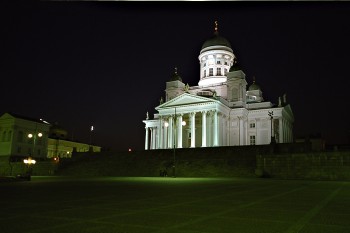This ‘n’ that
Best foot forward
14 May 2010 | This 'n' that
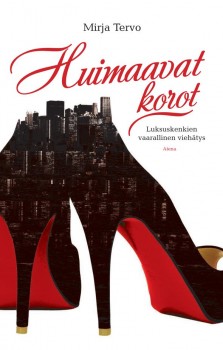 C’est moi. Tribute. Eliza. Muse. Monica. Very Privé, Super Private.
C’est moi. Tribute. Eliza. Muse. Monica. Very Privé, Super Private.
These are names of shoes that women buy in luxury shops on New York’s Fifth Avenue. Six inches or more of heels that cost anything between 500 and 5,000 dollars, make walking torture; but pain is tolerated, as along with the shoes a woman acquires a deeply satisfying feeling of being envied, beautiful and sexy (her toe cleavage has to be clearly visible).
Mirja Tervo (born 1971) is an ethnologist who spent a year and a half selling luxury shoes in Manhattan. Among her fellow sales personnel were a medical doctor, a musician, an actor and a retired baseball pro.
The shoe salon paid no salary, just commission of ten per cent, and the required minimum sale per week was 3,500 dollars. If a sales person failed to sell merchandise worth this sum, he or she was given a loan of 300 dollars, payable immediately when the results improved, and they quickly had to. More…
Paris, je t’aime
7 May 2010 | This 'n' that
‘Paris traverse la pensée comme une encyclopédie de la vie, où l’on découvre des passages, des cours intérieures, des ruelles et des autoroutes, toujours plus surprenants. La ville ne se vide ni n’abandonne jamais, n’accorde ni ne refuse.’
‘Paris permeates your mind like an encyclopaedia of life in which you will incessantly discover astonishing new passages, courtyards, alleys and avenues. It will never either run empty or surrender, it won’t admit or refuse.’
L’air de Paris / Pariisin tuoksu (‘Air of Paris’, Musta Taide, 2009) is an elegant little book that features artwork by Ismo Kajander and texts by Anna Kortelainen relating to the mother city of all artists. More…
Coming up next week…
7 May 2010 | This 'n' that
‘…A strange tapir / (the bi-coloured one) / a wondrous tapir (the many-toed one) / circles the tree, goes round and about, / a small word hangs from the tip of his snout….’
Helvi Juvonen (1919–1959) wrote nature-inspired poetry; she was a fan of the 19th-century American poet Emily Dickinson, whose work she also translated. Her short adult life, in the drab Helsinki of the post-war years, was burdened by poverty and illness, and yet she wished to ‘toast the richness of our lives’.
The literary scholar Emily Jeremiah has translated a handful of Juvonen’s poems and takes a look at her work in this, the 15th part of a series devoted to classic Finnish authors (also available in our archive are essays about Kirsi Kunnas, Henry Parland and Sirkka Turkka). Helvi Juvonen: small words celebrate ‘the richness of our lives’
Women and the city
17 April 2010 | This 'n' that
How was city life for the single woman a hundred years ago in Helsinki?
She could ride a bike, for example, provided it was equipped with an ‘alarm system’ and the speed was not high. Socially she could have fun as long as she obeyed the rules. No admittance to restaurants without male company, for example.
Some young women in those days had to make a living by teaching or by working in an office – before they got married, of course.
A new exhibition (25 March–29 August) at Helsinki’s Ateneum art museum, entitled Kaupungin naiset (‘Women of the city’), focuses on the cultural life of young women in Helsinki in the 1910s through the eyes of the writer and critic L. Onerva (aka Hilja Onerva Lehtinen, 1882–1972). More…
Bear-faced cheek
16 April 2010 | This 'n' that
Spring is here at long last, and the bears have woken up: this frightening beast has got out of the lair in Kuusamo, at the Predator Centre in north-eastern Finland (800 kilometres from Helsinki).
Some of our readers may remember Niisku, the brown bear portrayed in the print version of Books from Finland, issues 4/2006 and 1/2007 – very sleepy, contemplating hibernation.
There are probably about a thousand bears in Finland, and they usually hit the hay (aka the spruce branches in their lair) in November. Tiny bear cubs are born in late January or early February. The family will emerge from the lair when the snow melts. Niisku gave birth to two babies in the spring of 2007.
The Predator Centre in Kuusamo is a private orphanage for wild bears, lynxes and wolverines which have been brought there after being injured and/or orphaned.
Specimens of Ursus arctos has become a lifelong friends of Sulo Karjalainen (in the photo, right, with Juuso, c. 400 kilos) In summer he may go for forest walks and even fishing with Vyöti, 16, who was brought to the Centre as a small orphan.
The brown bear plays an important role in Finnish mythology, and often features in folk poetry. We are fans! But we never go into the woods alone when mother bear takes her babies out for a walk. Or, if we do, we keep making noises so that the bear family will know to avoid us. After all, if they can choose, they prefer carrots to humans (see the video on the photo page of the Centre video entitled ‘Porkkanat ja karhut’ [‘Carrots and bears’]).
Positive fools
1 April 2010 | This 'n' that
‘People who think about what others think of them are above all afraid of being ridiculed. Consider it an irony of fate or not, but the Finns in literature are usually laughable in some way or other,’ Janna Kantola – lecturer in Comparative Literature in Helsinki University – writes in an article entitled ‘Strong, thirsty and weird’, published in the 6/2009 issue of the Helsinki University Bulletin.
Mostly they drink and end up on the wrong side of the law. For example, there are Finnish seafarers in fiction by European writers whose rum bottles apparently have no bottoms.
‘Finland and the Finns appear, in particular, in thrillers from the Cold War: from Raymond Chandler’s The Long Goodbye (1953) to Alistair MacLean’s novel HMS Ulysses (1955). In these works, the unsmiling and hulking Finns have wide, horny hands, massive bottoms and the strength of a hundred men.
‘But not to worry. On a couple of occasions, Finns have even got to be the main characters of books. In these instances, the Finns no longer make people laugh but are mostly tragic, just as the characters in literature usually are when they are most interesting.
‘The main character in Richard Rayner’s novel The Cloud Sketcher (2000, USA) is an architect – a popular profession for Finns in modern literature – who has a disfigured face and a hard history, reaching America by way of the Finnish civil war. The historical novel by Helen Dunmore, House of Orphans (2006, UK), set in Finland in 1901–1904, is a love story about two young rebels, Eeva and Lauri.
One of the success stories of Finnish literature abroad are the humorous novels by Arto Paasilinna (born 1942): they have been translated into almost 40 languages. ‘Through his books Arto Paasilinna has turned being a fool into a positive characteristic. All things considered, this is something Finland will have no shortage in offering,’ Kantola concludes.
In your own time
16 March 2010 | This 'n' that
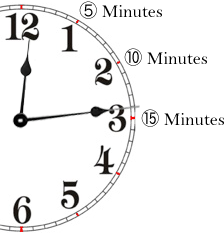 Ever wished there were just a few more hours in the day? We certainly have. Forgive us if you’ve seen it before, but this little homily has been doing the rounds on the internet in Finland. It made us laugh, if a little hollowly.
Ever wished there were just a few more hours in the day? We certainly have. Forgive us if you’ve seen it before, but this little homily has been doing the rounds on the internet in Finland. It made us laugh, if a little hollowly.
It’s healthy to eat an apple a day, and a banana, for the calcium, and an orange, for the vitamin C, and you need to drink a cup of green tea to reduce your cholesterol. You should also drink two litres of water (and wee the same amount, which doubles the amount of time you spend in the bathroom). And don’t forget the two decilitres of yogurt that you should eat to keep the bacterial flora of your stomach healthy. No one really knows what these bacteria are, but you MUST have at least a million of them, or you won’t be well! You must also drink a glass of red wine a day so you don’t have a heart attack, and a glass of white wine to protect your nervous system! And a glass of beer (I can’t quite remember why), but if you drink them all at the same time you may have a stroke. That won’t matter, though, as you won’t notice it. Everyone should also eat nuts and beans/peas every day. You should eat 4-6 times a day, light meals, but don’t forget that each mouthful should be chewed at least 36 times. That will take up 5 hours of your day! More…
The winter’s tale
15 March 2010 | This 'n' that
 It’s coming to an end now, but Helsinki has been experiencing its snowiest winter since the 1970s. Since Christmas the mercury has generally stayed ten to twenty degrees below zero.
It’s coming to an end now, but Helsinki has been experiencing its snowiest winter since the 1970s. Since Christmas the mercury has generally stayed ten to twenty degrees below zero.
People have long been complaining about the black ‘Euro winters’ – the arrival of really mild winter weather as a norm seemed to coincide with Finland’s membership of the European Union in 1995 – but now the boot’s on the other foot.
Speaking of which: young city people have gone on wearing their Converses, partly because they’ve never had to invest in proper winter footwear, partly to be cool. And it certainly has been.
Spring is almost here, but right now the forecast says there’s still time to ski. So, here are some suggestions we found on a maverick site called We Love Helsinki; open to everyone, this communal webzine (in Finnish only) features all sorts of material, from places to people, happenings, photos and observations, including a wryly ironic series on Helsinki’s most romantic places. Here are We Love Helsinki’s top tips for enjoying winter (translation below) in the city for those who haven’t really been through it before; they may also come in useful for any of our dear readers whose home cities are also experiencing unusually cold weather this year:
Snowsnow blahblahblah
The winter’s been going on for too long and it’s been gawped at too much already. If you’ve had enough of the tobogganing slope and complaining about the weather, here are some handy hints that we at We Love Helsinki have put together for enjoying the urban winter.
1. Eat snow. Go on, e a t it.
2. Live dangerously and walk close to the walls of houses. Just don’t look up, and don’t take any notice of the protective barriers that have been put in your way.
3. Lick a rotary clothesline. [Or anything else made of metal: it’s thrillingly dangerous, as your tongue will stick. Ouch! The Editors]
4. The hours of daylight show an unpleasant tendency to increase towards spring. Minimise the effect by sleeping until six in the evening.
5. Enjoy the outdoors: take the train to work. [The Finnish rail services have been painfully ineffective this winter. The Editors]
6. Or save time and skate to work.
7. Ski. Just ski.
8. See if you can die of irritation by digging the wrong car out of the snow.
Funny ha ha?
3 March 2010 | This 'n' that
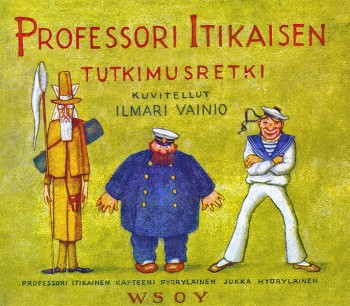 Comic books, graphic novels: the popularity of stories in pictures keeps on growing everywhere – and they may or not may be ‘comical’.
Comic books, graphic novels: the popularity of stories in pictures keeps on growing everywhere – and they may or not may be ‘comical’.
In Finland, sarjakuva (lit. serial picture) will celebrate its 100th anniversary in 2011. The first Finnish picture story, Professori Itikaisen tutkimusretki (‘Professor Itikainen’s expedition’, WSOY), by Ilmari Vainio, was published in 1911.
Ilmari Vainio (1892–1955) was a customs official who later also published two fairy tales and two handbooks for boy scouts. Professor Itikainen is a scientist who sets out on the sea and then finds himself, together with two brave seamen, facing various dangers in Africa, China and on the North Pole. A happy ending ensues in the form of safe arrival back in Helsinki on page 48. More…
Let us eat cake
4 February 2010 | This 'n' that
Here at Books from Finland central we’re celebrating, with the one Finnish literary anniversary that involves its own dedicated cake.
The fifth of February marks the birthday of the poet J.L. Runeberg (1804–1877) – writer, among many other things, of the Finnish national anthem (actually unofficial, as there’s no mention of such a thing in the legislation), which he wrote in Swedish, Vårt land (in Finnish, Maamme). More…
Morning coffee yoik
29 January 2010 | This 'n' that
The Sámi, or Lapp, people invented yoiking (juoiggus; in Finnish, joiku) aeons ago. Today, this monophonic vocal music, or chanting, is still practised by Sámi artists, among them Wimme Saari (born 1959 in Enontekiö, 300 km north of the Arctic Circle, a son of a reindeer herdsman), who’s brought a new dimension to this ancient art form. More…
Translator at play
28 January 2010 | This 'n' that
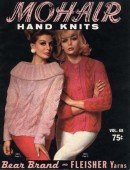 Järjestelmällistämättömyydellänsäkäänköhän?
Järjestelmällistämättömyydellänsäkäänköhän?
This is supposed to be the longest Finnish word. Lola Rogers interprets it as ‘You mean, not even (when it’s done) with their (usual) lack of systematization?’ More…
Beating the winter blues
8 January 2010 | This 'n' that
We’ve passed the solstice, so in principle the days are getting longer; but as we drag ourselves back into the office after the holidays, the mornings and evenings still seem pretty gloomy. We’re not complaining; further north, as the radio weather forecast reminds us daily, it’s even darker. Here, sunrise is after nine and sunset before four; further north, in Utsjoki, right up in the Arctic, it set in late November and won’t rise again until 16 January.
Still, even here, any glimmer of light is welcome. All over the city, at this time of year, SADS cafes spring up, with high-intensity light sources to combat seasonal affective disorder or, as we call it in the vernacular, the winter blues. The effect, especially after a couple of hours spent in an editorial board meeting, can be electrifying. More…
Best foot forward
11 December 2009 | This 'n' that

Diem Hy and her trademark curls
When you step outside your office, what do you see? Not the streets and buildings, although photographing them could be an interesting project too, especially when you live and work in a city as self-consciously monumental as Helsinki. No; we’re talking about the shifting landscape of people and their clothes, as documented in the primarily photographic website Hel Looks.
A ‘hobby project’ by Liisa Jokinen and Sampo Karjalainen, Hel Looks documents fashion in the streets and clubs of Helsinki. It’s self-consciously a fashion project – in addition to documenting Finnish looks, Jokinen and Karjalainen want to ‘encourage people to dress and create their own styles… to promote emerging Finnish designers… because we like fashion, clothing, young people and photography.’
For us, though, the stories the pictures tell are more fascinating. Each entry shows one or two people. usually photographed in the street, accompanied by a brief quote from the subject. Some simply roll-call the designers they’re wearing, which may be interesting for the fashion pack but not so interesting for the rest of us. But others offer self-analyses that could, at the very least, furnish the beginnings of a short story. Diem Hy, 17, for example, is shown in jeans and a second-hand leather jacket: ‘My hair is my trade mark. I’m not sure if I could live without my curls’; Simo, 18, likes ‘all clothes that date from before 1992’, Buster, 18, dresses in his grandfather’s clothes and likes to think ‘that I can dress old-fashioned but keep my mind fresh.’ Tiia, 22, simply ‘likes the colour blue’ (and indeed is dressed in nothing else). The range of selves, and self-presentations, is endless. Any authors in search of a character can simply apply here.
It’s (virtually) Christmas!
28 November 2009 | This 'n' that
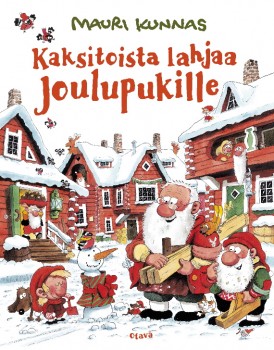
Father Christmas / Santa Claus by Mauri Kunnas
What to give the man who has everything? In prizewinning children’s author and illustrator Mauri Kunnas’s Twelve Gifts for Santa, Zac, one of Father Christmas’s little helpers, decides to give him twelve good deeds. Doing so is not as easy as it looks, however, and you can follow the twists and turns of the story on the Kidzone Finland advent calendar from Tuesday, 1 December, with one window opening each day until Christmas Eve.
Mauri Kunnas (born 1950) published the first of his popular picture books for children in 1980; entitled Koiramäen talossa (‘Doghill Farm’), it describes – with the accuracy of a treatise on folklore studies – life in a country farmhouse at the end of the 19th century. His hilarious canine characters, in more than forty books, have now found readers in almost thirty languages. More…

